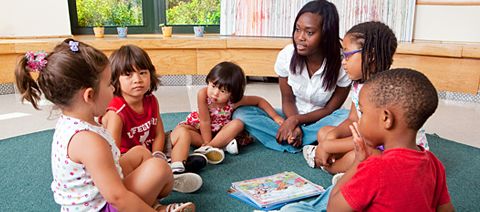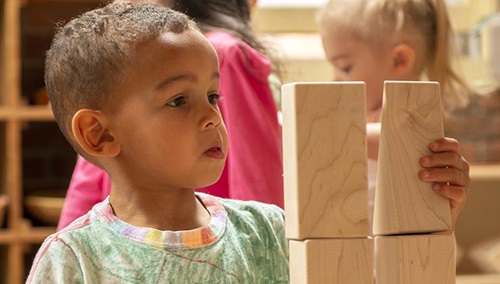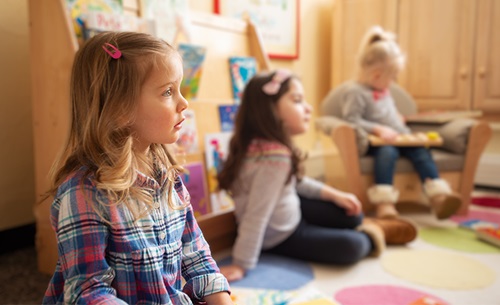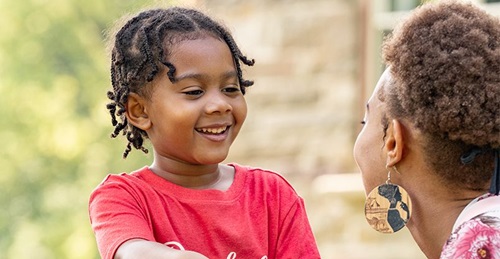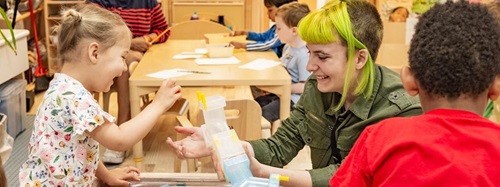Standards of Experience
| May 2010Many public officials, policy makers, politicians, journalists, and many others use a variety of clichés when discussing education. Clichés are usually defined as vague, stereotyped, overused expressions that large numbers of people readily agree with. They are also ideas that have a kind of common sense quality to them. For example, the first goal on the list of national goals proclaimed by the National Education Goals Panel in 1990 is “All children shall come to school ready to learn.” Was it assumed by the officials who originated this goal that children were not learning during the five years of life before entering school—learning, for example, how to walk and talk and play, and so much more? How should the sentence “All children shall come to school ready to learn” be completed? Ready to learn what? Probably it could end “…ready to learn whatever the school wants them to learn.”
Today the answer to the latter question is most likely to be stated in terms of performance standards, benchmarks, and other types of outcomes. Early childhood educators are pressured to get children “ready” for school, ready to “succeed” in school, and ready to perform well on tests of academic skills. All of these goals and outcomes are frequently cited as the desirable outcomes or end-products of the curricula “delivered” to young children. Reference to the “delivery” of a curriculum—as in “delivering the mail,” and talk about “inputs” that are expected to produce specific “outputs” or outcomes—is increasingly frequent. These concerns with outcomes and end-products are based on a corporate, industrial, or factory model of education. Indeed, some commentators even refer to child care as an “industry” instead of as a service. Such an industrial model implies that once the raw materials have been placed on the right kind of assembly line and then been subjected to a fixed series of processes, “out” “come” identical products—identical shoes, chairs, cell phones, or test scores, or whatever else is being manufactured. This industrial model is not completely successful for corporations and factories; periodically there are bankruptcies and large-scale recalls of manufactured products because of faulty design or errors in production processes. The industrial model is not fool-proof for industries, and I suggest that it is a very inappropriate basis for thinking about the education of young children. In fact, it is most likely to be seriously misleading for the design of provisions for young children.
I suggest that a more appropriate approach might be to ask ourselves: What are the standards of experience that we want all of our children to have? Rather than “delivering” education, we are most likely to help children by “providing” experiences known to be beneficial to young children. Thus when we decide to evaluate or assess a provision for young children, we might ask: What kind of experiences is each child having much of the time? Or perhaps we should ask: What does it feel like to be a child in this environment day after day after day? To use these questions as a basis for assessing the appropriateness of provision for young children requires coming to agreement on which experiences are thought to be essential to yield the kinds of short-term and long-term effects (vs. products) we want to cause. Below is a very preliminary list of some important “standards of experiences” that should be provided for all young children in all programs, much of the time.
Young children should frequently have the following experiences:
- Being intellectually engaged, absorbed, and challenged.
- Having confidence in their own intellectual powers and their own questions.
- Being engaged in extended interactions (e.g. conversations, discussions, exchanges of views, arguments, planning).
- Being involved in sustained investigations of aspects of their own environment worthy of their interest, knowledge, and understanding.
- Taking initiative in a range of activities and accepting responsibility for what is accomplished.
- Knowing the satisfaction that can come from overcoming obstacles and setbacks and solving problems.
- Helping others to find out things and to understand them better.
- Making suggestions to others and expressing appreciation of others’ efforts and accomplishments.
- Applying their developing basic literacy and numeracy skills in purposeful ways.
- Feelings of belonging to a group of their peers.
- Etc., etc.
The list is derived from general consideration of the kinds of experiences that all children should have much of the time spent in our educational settings. It is based on philosophical commitments as well as the best available empirical evidence about young children’s learning and development. If the focus of program evaluation and assessment is on “outcomes” such as those indicated by test scores, then evaluators and assessors would very likely emphasize “drill and practice” of phonemics, or rhyming, or various kinds of counting, or introductory arithmetic. While in and of themselves such experiences are not necessarily harmful to young children, they overlook the kinds of experiences that are most likely to strengthen and support young children’s intellectual dispositions and their innate thirst for better, fuller, and deeper understanding of their own experiences. A curriculum or teaching method focused on academic goals emphasizes the acquisition of bits of knowledge and overlooks the centrality of understanding as an educational goal. After all, literacy and numeracy skills are not ends in themselves but basic tools that can and should be applied in the quest for understanding. In other words, children should be helped to acquire academic skills in the service of their intellectual dispositions, and not at their expense.

